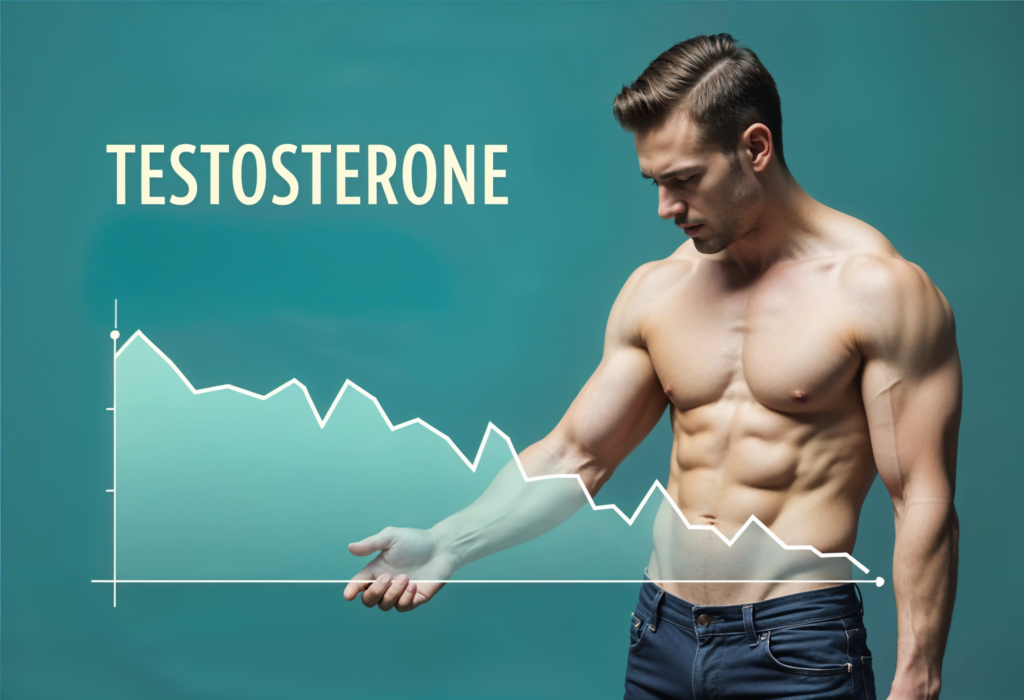
What Are Normal Testosterone Levels in Men? How Testosterone Therapy can help?
Testosterone is often associated with markers of strength, vitality, and masculinity, but much more than that, testosterone plays a critical role in several physiological processes, from sperm production to muscle mass development, energy levels, focus on the mind, and general well-being. Despite its importance, there has been a decline of around 20% in testosterone in men over the last two decades, according to research evidence.
The concern, however, has caused much interest in the possible therapeutic utility of testosterone therapy for combating declining levels and men’s quality of life. So, let’s jump right into normal testosterone levels, the measure of these levels, and their age-related fluctuations, as it has implications for why the present criteria might have to be reconsidered for diagnosis. Next, how testosterone therapy works, as well as its benefits for symptomatic males with low testosterone symptoms.
What Are Normal Testosterone Levels?
Although testosterone levels vary for each person, doctors have established what is known as a reference range or what is normal. The healthy range of total testosterone is 15 to 30 nmol/L. In U.S. units, this is about 450 to 1070 ng/dL.
In addition to total testosterone, free testosterone—the unbound portion of testosterone in the bloodstream—is also critical. Free testosterone is responsible for enabling many of the hormone’s physiological effects. Healthy free testosterone levels are generally 0.225 nmol/L or higher.
However, “normal” testosterone levels don’t tell the whole story. Many men experience symptoms of low testosterone, such as fatigue, low libido, and mood swings, even when their test results fall within these ranges. This discrepancy underscores the need for a more nuanced approach to diagnosing and treating testosterone-related issues.
How Is Testosterone Measured?
Testosterone levels are measured by taking blood tests, which give a snapshot of the hormone circulating in your body. The best time to take this test is early in the morning, typically around 9 a.m. when testosterone levels are at their peak. Note that testosterone levels can fluctuate throughout the day, decreasing by as much as 10–20%.
Blood samples can be collected through two methods:
- Finger-Prick Tests: Easy to use and discreet enough for home application, this kit enables men to determine their testosterone levels discreetly in the comfort of their homes.
- Venous Blood Draws: This method conducted by medical professionals is richer and deeper than that above since the sample can be tested for total and free testosterone and related hormones and proteins.
While total testosterone levels are important to know, free testosterone levels and other biomarkers like SHBG and LH help make a better judgment.

The Age Factor: How Testosterone Levels Change Over Time
With age, the decline of testosterone is inevitable; learn how it changes with time. Testosterone levels are not constant during any one man’s lifetime; they do follow a predictably linear pattern. Peaking in a man’s late teens or early twenties, after that, testosterone levels stay fairly flat for approximately ten years and then tend to drop gradually from around age 30 onwards.
Research indicates that total testosterone levels drop by approximately 1.6% annually, while free testosterone decreases at a faster rate of 2–3% per year. This natural decline is accompanied by an increase in SHBG, a protein that binds to testosterone and reduces the amount available for the body to use.
Here’s a breakdown of testosterone levels by age:
| Age Group | Average Total Testosterone (nmol/L) |
| 20–30 | 25–30 |
| 31–40 | 22–25 |
| 41–50 | 19–22 |
| 51+ | 15–19 |
These numbers illustrate the relevance of accounting for age in measuring testosterone levels. A number that is “within normal” for an 80-year-old may not be sufficient for a 30-year-old man who has symptoms of low testosterone.
Why Does Testosterone Levels Decline?
Over time, researchers have noticed a steep decline in the average testosterone level in men. Contributing to this phenomenon are the following:
- Being Overweight: Extra body weight has been associated with reduced production of testosterone.
- Environmental Toxins: Exposure to chemicals like BPA and phthalates can interfere with hormone production.
- Lifestyle Choices: Poor diet, lack of exercise, and high levels of stress all negatively impact testosterone levels.
Even though the levels of testosterone are falling, many men remain undiagnosed or untreated. The stigma surrounding testosterone therapy and the misconceptions about the hormone itself have deterred both patients and medical professionals from dealing with the issue head-on.

Challenges in Diagnosing Low Testosterone
The process of establishing a diagnosis of low testosterone is complicated, mainly by the use of “normal” ranges that do not take into account individual differences or symptomatology. Laboratory reference ranges generally are population averages, which include men in a variety of health statuses, ages, and lifestyles.
This has significant flaws:
- Men presenting with symptoms of low testosterone may yet be in the “normal” range and thus denied therapy.
- Younger men, when the testosterone levels are low for their age group, have the risk of being misdiagnosed or receiving some other treatment like that for depression or fatigue.
- The experts suggest that to better improve the diagnosis, total and free testosterone levels should be considered along with patients’ symptoms and other biomarkers, such as SHBG and LH.
How Testosterone Therapy Can Help?
Testosterone therapy has become the most effective treatment for those men who are suffering with low testosterone levels. In this treatment, the person is supplemented with the body’s own testosterone production to reduce symptoms and improve health.
Benefits of Testosterone Therapy:
- Increased Energy and Vigor: Men often report greater energy and concentration after starting testosterone therapy.
- Sexual Health: Libido, erectile function, and overall sexual satisfaction can improve dramatically.
- Better Mood: Testosterone therapy has been associated with a reduction in symptoms of depression and anxiety.
- Increased Muscle Mass and Strength: Since testosterone increases protein synthesis, it builds lean muscle.
The patient must be very cooperative with the health care provider so that the testosterone therapy can be personalized to suit individual needs. Regular blood tests and monitoring are very important for achieving the best possible results while minimizing potential side effects.
Reliable and Trusted Testosterone Therapy for Low T
Direct Preventive Care offers a comprehensive approach to testosterone therapy that involves advanced diagnostic tools and individual treatment plans. Their services will include a detailed blood test for both total and free testosterone, online consultation with a proficient healthcare provider, and prescription medicines delivered directly to your home.
With a focus on proactive health, Direct Preventive Care offers men accurate diagnosis and Testosterone Therapy, which is based on their unique hormonal profiles. Whether you have experienced low libido, fatigue, or a variety of other symptoms from low testosterone, the professional team can assist in re-securing your control over your health and well-being.














